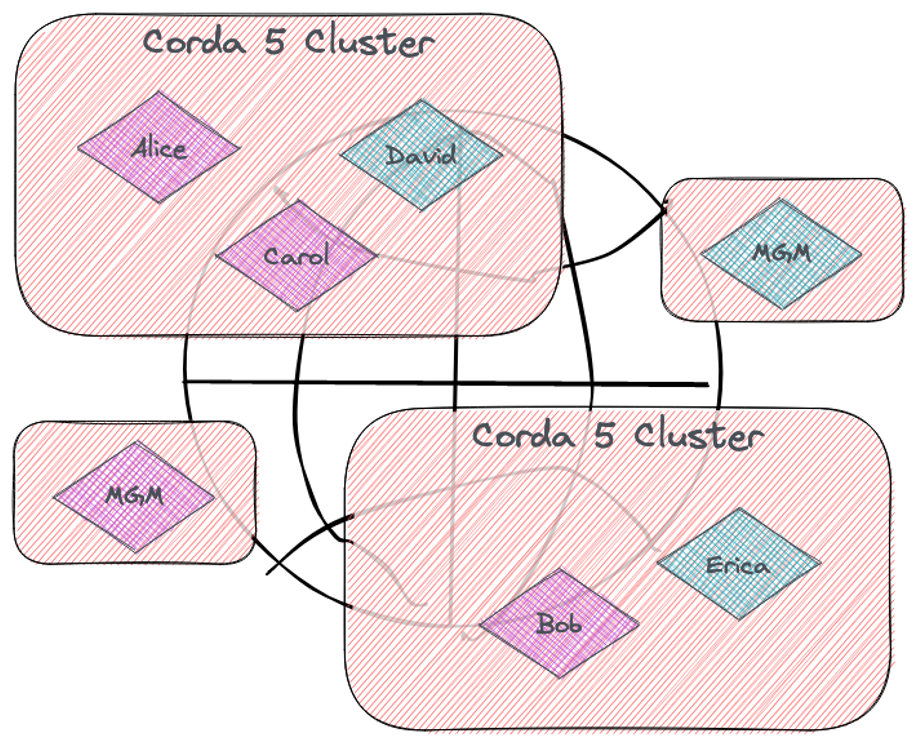Virtual Nodes

As of Corda 5, a single Corda deployment can host multiple virtual node identities. In previous versions, the identity and the compute process/JVM were tied. Hence in this version of Corda, we refer to virtual nodes, rather than nodes. They are now a context in which a distributed application runs, rather than the process itself.
We now also refer to application networks, as networks of virtual nodes that all run the same, or compatible, CorDapps Corda Distributed Application. A Java (or any JVM targeting language) application built using the Corda build toolchain and CorDapp API to solve some problem that is best solved in a decentralized manner. and where membership of the network is managed by the MGM Membership Group Manager. May also be referred to as the Network Manager. It is a virtual node and Corda identity that acts as a central registrar for group membership. . In other words, a virtual node represents an identity on a network of application users that is managed by the MGM.
A virtual node is abstracted from the Corda runtime, and so a Corda cluster can support many virtual node members of different networks. However, a given virtual node can only belong to a single application network, and can only be deployed to a single Corda cluster at one time. An application network can span multiple Corda clusters.

Virtual nodes are identified by their X.500 A series of international standards defining a global directory service protocol for computer networks. It provides a structured framework for storing, accessing, and managing information about network resources and users in a hierarchical and distributed manner. name and the ID of the network they belong to. This means that the same X.500 name (for example, the same legal entity An organization or individual that participates in one or more application networks that can provide attestation that they are whom they claim to be. ), can exist on multiple networks at the same time.
For information about managing virtual nodes using the REST API, see Managing Virtual Nodes.
Was this page helpful?
Thanks for your feedback!
Chat with us
Chat with us on our #docs channel on slack. You can also join a lot of other slack channels there and have access to 1-on-1 communication with members of the R3 team and the online community.
Propose documentation improvements directly
Help us to improve the docs by contributing directly. It's simple - just fork this repository and raise a PR of your own - R3's Technical Writers will review it and apply the relevant suggestions.
We're sorry this page wasn't helpful. Let us know how we can make it better!
Chat with us
Chat with us on our #docs channel on slack. You can also join a lot of other slack channels there and have access to 1-on-1 communication with members of the R3 team and the online community.
Create an issue
Create a new GitHub issue in this repository - submit technical feedback, draw attention to a potential documentation bug, or share ideas for improvement and general feedback.
Propose documentation improvements directly
Help us to improve the docs by contributing directly. It's simple - just fork this repository and raise a PR of your own - R3's Technical Writers will review it and apply the relevant suggestions.